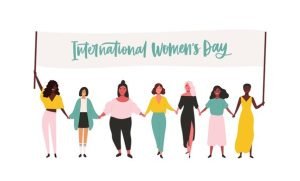Table of Contents
Women’s Day 2023: Its Importance, History, and Interesting Facts
Every year on March 8, International Women’s Day honors women’s achievements in the social, cultural, economic, and political spheres. The day was established many years ago to promote gender equality around the world. This year, in honor of Women’s Day, we thought we’d share some lesser-known facts about the occasion.
Why Do We Celebrate Women’s Day?

The United Nations established International Women’s Day in 1975, initially calling it International Women’s Year. Two years later, the UN General Assembly declared the day an official UN holiday and invited member states to celebrate women’s rights. Since then, the day has been observed not only by the UN but by the entire world.
What Is the Color Theme of Women’s Day?
Women’s Day colors are purple, green, and white, which represent justice, hope, purity, and dignity.
What Is the 2023 Women’s Day Theme?

Every year, a theme is assigned to International Women’s Day, around which all celebrations revolve. The United Nations’ theme for this year is #EmbraceEquity. Last year’s International Women’s Day theme was #Breakthebias, which highlighted the issues women face as a result of gender bias and the need to break them in order to create an equal world for all genders.
How Long Has Women’s Day Been Celebrated?
The now-defunct Socialist Party of America organized the first National Woman’s Day on February 28, 1909, which took place on the last Sunday in February. Clara Zetkin, the leader of the Social Democratic Party’s Women’s Office in Germany, proposed the idea of a global International Women’s Day in 1910 so that people all over the world could celebrate at the same time. The first International Women’s Day was held on March 19, 1911, with over 1 million people participating from Germany, Switzerland, Austria, and Denmark.
What is the significance of Russia’s historical celebration?
The celebration of Women’s Day in Russia in 1917 earned them the right to vote.
Women in Russia commemorated the day that year by going on strike for ‘bread and peace,’ protesting World War I, and advocating for gender equality. Tsar Nicholas II was furious and gave General Khabalov of the Petrograd Military District the authority to shoot any woman who refused to stand down. They did not back down, and the protests continued, eventually leading to the Tsar’s abdication. As a result of their protest, the interim government granted women the right to vote.
Here are Some Interesting Facts About Women’s Day.
- Many countries, including Cuba, Vietnam, Afghanistan, Cambodia, Laos, and Russia, observe International Women’s Day as a public holiday.
- The United Nations Day for Women’s Rights and International Peace is also known as Women’s Day.
- On March 19, 1911, the first International Women’s Day was celebrated. Later, on March 8, 1913, the date was changed to March 8.
- The International Women’s Day logo features a female gender symbol.
- Former President Barack Obama declared March to be Women’s History Month in the United States in 2011.
- On March 8, 1971, during World War I, Russian women went on strike for bread and peace. On the occasion of Women’s Day, the provisional government also granted Russian women the right to vote.
- International Women’s Day is observed alongside Mother’s Day in some parts of the world. Countries such as Serbia, Albania, Uzbekistan, and Macedonia combine the two holidays.
